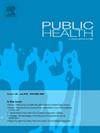Differential impacts of cigarette tax increases on health equity in the United States
IF 3.9
3区 医学
Q1 PUBLIC, ENVIRONMENTAL & OCCUPATIONAL HEALTH
引用次数: 0
Abstract
Objectives
Our study investigates the health equity implications of higher cigarette taxes by examining the differential responses among various sociodemographic groups in the United States.
Study design
Repeated observational study.
Methods
This study utilizes a nationally representative, cross-sectional dataset (n = 1,236,126) from the Tobacco Use Supplement to the Current Population Study (1992–2019). We employ a logistic regression model with two-way fixed effects analysis to examine the response of smoking participation to combined federal and state cigarette taxes, stratified by sociodemographic characteristics.
Results
Our findings revealed variability in cigarette tax sensitivity across sociodemographic groups. Males, younger adults, metropolitan residents, Hispanics, individuals with higher education, higher-income individuals, and part-time employees were more responsive to tax changes than their counterparts. Those with less than a high school degree were the least responsive among education groups, and individuals with household incomes below $49,999 were the least responsive among income groups. A 10 % increase in cigarette tax reduces smoking by 2.94 % in individuals aged 18–24, 1.91 % in those aged 25–44, and 1.77 % in those aged 45–64. With year- and state-fixed effects, the responsiveness for the youngest group decreases to −0.135, with similar patterns observed in other age groups.
Conclusions
These differential responses highlight the potential of tax policy as a tool for promoting health equity. However, tax policy alone may not be sufficient to reduce smoking rates and improve health outcomes in the least responsive groups.
求助全文
约1分钟内获得全文
求助全文
来源期刊

Public Health
医学-公共卫生、环境卫生与职业卫生
CiteScore
7.60
自引率
0.00%
发文量
280
审稿时长
37 days
期刊介绍:
Public Health is an international, multidisciplinary peer-reviewed journal. It publishes original papers, reviews and short reports on all aspects of the science, philosophy, and practice of public health.
 求助内容:
求助内容: 应助结果提醒方式:
应助结果提醒方式:


